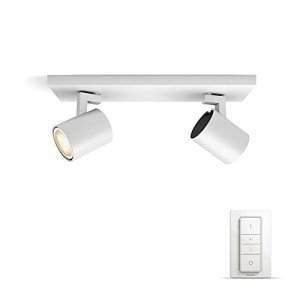10 Facts About Shop Lighting UK That Insists On Putting You In A Positive Mood
Shop Lighting UK: Illuminating the Retail Experience
In the ever-evolving world of retail, the value of shop lighting can not be overemphasized. It not just enhances the visual appeal of products but likewise affects customer behavior, their state of mind, and the total shopping environment. With advancements in technology and style, shop owners in the UK have a myriad of alternatives to select from when it comes to lighting options. This article will explore the types of lighting available, their benefits, and considerations for producing the best atmosphere in a retail area.
Significance of Proper Shop Lighting
Effective shop lighting plays an essential function in consumer experience and can substantially impact sales. Here are some crucial reasons why appropriate lighting is necessary for retail environments:
- Highlighting Products: Good lighting draws attention to items, making them more attractive to customers.
- Creating Atmosphere: The best lighting can set the mood and evoke feelings, affecting acquiring decisions.
- Enhancing Safety: Well-lit stores are much safer, helping consumers navigate without danger of tripping or mishaps.
- Improving Visual Merchandising: Proper lighting can enhance display screens, making them lively and distinctive.
Kinds Of Shop Lighting
Shop owners can select from different types of lighting, each serving different functions, consisting of ambient, job, accent, and decorative lighting. Here's a breakdown of each type:
Type of Lighting
Description
Finest Uses
Ambient Lighting
Offers total lighting to the area.
General retail areas like stores and grocery stores.
Task Lighting
Focuses on particular locations to improve visibility for tasks.
Checkout counters and fitting spaces.
Accent Lighting
Emphasizes particular items or screens, producing a focal point.
Show cases, art, or promotional items.
Decorative Lighting
Includes visual appeal and boosts the total decor.
Chandeliers and special fixtures in high-end shops.
1. Ambient Lighting
Ambient lighting is the fundamental illumination within a shop. It fills the whole space, ensuring that clients can see and browse comfortably. Merchants must think about utilizing LED panels or ceiling-mounted fixtures, as they use energy performance and exceptional light distribution.
2. Job Lighting
Task lighting is vital for locations where particular activities take place, such as checkout counters or workstations. Shop owners can install under-cabinet lighting or track lights to focus lighting on these locations, enhancing the convenience and experience for both personnel and consumers.
3. Accent Lighting
Accent lighting helps accentuate specific items or features within the store. This type of lighting can be accomplished through spotlights, track lights, or strategically put wall-mounted fixtures. It is especially reliable for showcasing featured items, marketing display screens, or art work, guiding client focus where it's most needed.
4. Decorative Lighting
Beyond performance, decorative lighting aspects add design and character to a retail area. Special fixtures, such as pendant lights or oversized chandeliers, can produce a remarkable environment, especially in shops or high-end retailers. These declaration pieces not only illuminate however likewise enhance the shop's branding and visual appeal.
Selecting the Right Lighting for Your Shop
When selecting lighting for a retail environment, shop owners must think about the following aspects:
- Store Type: Different types of retail require differing lighting services. A precious jewelry store may need softer, more concentrated lights, while a supermarket might need brighter ambient lighting.
- Color Temperature: The color of light can impact the perception of items. UK Light Shop (under 3000K) produce a relaxing feel, while cool lights (above 3000K) can make an area feel more contemporary.
- Energy Efficiency: The use of LED lighting not only saves energy but also lowers costs gradually.
- Versatility: Install dimmers or adjustable fixtures to adapt lighting for different celebrations or seasonal changes.
The Future of Shop Lighting
As technology progresses, shop lighting is ending up being progressively sophisticated. Here are some patterns forming the future of retail lighting in the UK:
- Smart Lighting Solutions: Integrated technology permits remote control and automation of lighting systems through smartphones or home assistants.
- Sustainable Lighting: There is a growing emphasis on environment-friendly options, with retailers going with products that minimize ecological effect.
- Centerpiece Lighting: Retailers are significantly utilizing lighting to develop specific centerpieces that direct consumer traffic and improve product display screens.
Frequently Asked Questions about Shop Lighting in the UK
Q: What is the very best kind of lighting for a clothing store?A: A mix of
ambient and accent lighting is usually best. Ambient lighting is necessary for overall visibility, while accent lighting can help highlight key pieces or collections. Q: How can I make my shop lighting more energy-efficient? A: Consider utilizing LED lights, installing motion sensing units, or incorporating
dimmers. This decreases energy usage and costs in the long run. Q: Should I utilize natural light in my shop?A: Yes, making use of natural light can enhance customer experience whilelowering energy costs. However, it is necessary to stabilize natural light with synthetic lighting, especially on cloudy days. Q: How often should I change my shop's lighting fixtures?A: This depends upon the kind of fixtures used. LED lights can last approximately 25,000 hours, while traditional bulbs****
may require to be replaced more frequently. Regular maintenance checks are advised. In an increasingly competitive retail environment, shop lighting plays an indispensable function in forming customer experiences and driving sales. Sellers in the UK have a large selection of alternatives and innovations at their disposal to develop the best ambiance. By understanding the significance of the various types of lighting and how to implement them successfully, shop owners can enhance their space, making shopping more satisfying for consumers while increasing their bottom line. 